6.6: Eat Healthy on My Budget
- Page ID
- 2410
\( \newcommand{\vecs}[1]{\overset { \scriptstyle \rightharpoonup} {\mathbf{#1}} } \)
\( \newcommand{\vecd}[1]{\overset{-\!-\!\rightharpoonup}{\vphantom{a}\smash {#1}}} \)
\( \newcommand{\id}{\mathrm{id}}\) \( \newcommand{\Span}{\mathrm{span}}\)
( \newcommand{\kernel}{\mathrm{null}\,}\) \( \newcommand{\range}{\mathrm{range}\,}\)
\( \newcommand{\RealPart}{\mathrm{Re}}\) \( \newcommand{\ImaginaryPart}{\mathrm{Im}}\)
\( \newcommand{\Argument}{\mathrm{Arg}}\) \( \newcommand{\norm}[1]{\| #1 \|}\)
\( \newcommand{\inner}[2]{\langle #1, #2 \rangle}\)
\( \newcommand{\Span}{\mathrm{span}}\)
\( \newcommand{\id}{\mathrm{id}}\)
\( \newcommand{\Span}{\mathrm{span}}\)
\( \newcommand{\kernel}{\mathrm{null}\,}\)
\( \newcommand{\range}{\mathrm{range}\,}\)
\( \newcommand{\RealPart}{\mathrm{Re}}\)
\( \newcommand{\ImaginaryPart}{\mathrm{Im}}\)
\( \newcommand{\Argument}{\mathrm{Arg}}\)
\( \newcommand{\norm}[1]{\| #1 \|}\)
\( \newcommand{\inner}[2]{\langle #1, #2 \rangle}\)
\( \newcommand{\Span}{\mathrm{span}}\) \( \newcommand{\AA}{\unicode[.8,0]{x212B}}\)
\( \newcommand{\vectorA}[1]{\vec{#1}} % arrow\)
\( \newcommand{\vectorAt}[1]{\vec{\text{#1}}} % arrow\)
\( \newcommand{\vectorB}[1]{\overset { \scriptstyle \rightharpoonup} {\mathbf{#1}} } \)
\( \newcommand{\vectorC}[1]{\textbf{#1}} \)
\( \newcommand{\vectorD}[1]{\overrightarrow{#1}} \)
\( \newcommand{\vectorDt}[1]{\overrightarrow{\text{#1}}} \)
\( \newcommand{\vectE}[1]{\overset{-\!-\!\rightharpoonup}{\vphantom{a}\smash{\mathbf {#1}}}} \)
\( \newcommand{\vecs}[1]{\overset { \scriptstyle \rightharpoonup} {\mathbf{#1}} } \)
\( \newcommand{\vecd}[1]{\overset{-\!-\!\rightharpoonup}{\vphantom{a}\smash {#1}}} \)
\(\newcommand{\avec}{\mathbf a}\) \(\newcommand{\bvec}{\mathbf b}\) \(\newcommand{\cvec}{\mathbf c}\) \(\newcommand{\dvec}{\mathbf d}\) \(\newcommand{\dtil}{\widetilde{\mathbf d}}\) \(\newcommand{\evec}{\mathbf e}\) \(\newcommand{\fvec}{\mathbf f}\) \(\newcommand{\nvec}{\mathbf n}\) \(\newcommand{\pvec}{\mathbf p}\) \(\newcommand{\qvec}{\mathbf q}\) \(\newcommand{\svec}{\mathbf s}\) \(\newcommand{\tvec}{\mathbf t}\) \(\newcommand{\uvec}{\mathbf u}\) \(\newcommand{\vvec}{\mathbf v}\) \(\newcommand{\wvec}{\mathbf w}\) \(\newcommand{\xvec}{\mathbf x}\) \(\newcommand{\yvec}{\mathbf y}\) \(\newcommand{\zvec}{\mathbf z}\) \(\newcommand{\rvec}{\mathbf r}\) \(\newcommand{\mvec}{\mathbf m}\) \(\newcommand{\zerovec}{\mathbf 0}\) \(\newcommand{\onevec}{\mathbf 1}\) \(\newcommand{\real}{\mathbb R}\) \(\newcommand{\twovec}[2]{\left[\begin{array}{r}#1 \\ #2 \end{array}\right]}\) \(\newcommand{\ctwovec}[2]{\left[\begin{array}{c}#1 \\ #2 \end{array}\right]}\) \(\newcommand{\threevec}[3]{\left[\begin{array}{r}#1 \\ #2 \\ #3 \end{array}\right]}\) \(\newcommand{\cthreevec}[3]{\left[\begin{array}{c}#1 \\ #2 \\ #3 \end{array}\right]}\) \(\newcommand{\fourvec}[4]{\left[\begin{array}{r}#1 \\ #2 \\ #3 \\ #4 \end{array}\right]}\) \(\newcommand{\cfourvec}[4]{\left[\begin{array}{c}#1 \\ #2 \\ #3 \\ #4 \end{array}\right]}\) \(\newcommand{\fivevec}[5]{\left[\begin{array}{r}#1 \\ #2 \\ #3 \\ #4 \\ #5 \\ \end{array}\right]}\) \(\newcommand{\cfivevec}[5]{\left[\begin{array}{c}#1 \\ #2 \\ #3 \\ #4 \\ #5 \\ \end{array}\right]}\) \(\newcommand{\mattwo}[4]{\left[\begin{array}{rr}#1 \amp #2 \\ #3 \amp #4 \\ \end{array}\right]}\) \(\newcommand{\laspan}[1]{\text{Span}\{#1\}}\) \(\newcommand{\bcal}{\cal B}\) \(\newcommand{\ccal}{\cal C}\) \(\newcommand{\scal}{\cal S}\) \(\newcommand{\wcal}{\cal W}\) \(\newcommand{\ecal}{\cal E}\) \(\newcommand{\coords}[2]{\left\{#1\right\}_{#2}}\) \(\newcommand{\gray}[1]{\color{gray}{#1}}\) \(\newcommand{\lgray}[1]{\color{lightgray}{#1}}\) \(\newcommand{\rank}{\operatorname{rank}}\) \(\newcommand{\row}{\text{Row}}\) \(\newcommand{\col}{\text{Col}}\) \(\renewcommand{\row}{\text{Row}}\) \(\newcommand{\nul}{\text{Nul}}\) \(\newcommand{\var}{\text{Var}}\) \(\newcommand{\corr}{\text{corr}}\) \(\newcommand{\len}[1]{\left|#1\right|}\) \(\newcommand{\bbar}{\overline{\bvec}}\) \(\newcommand{\bhat}{\widehat{\bvec}}\) \(\newcommand{\bperp}{\bvec^\perp}\) \(\newcommand{\xhat}{\widehat{\xvec}}\) \(\newcommand{\vhat}{\widehat{\vvec}}\) \(\newcommand{\uhat}{\widehat{\uvec}}\) \(\newcommand{\what}{\widehat{\wvec}}\) \(\newcommand{\Sighat}{\widehat{\Sigma}}\) \(\newcommand{\lt}{<}\) \(\newcommand{\gt}{>}\) \(\newcommand{\amp}{&}\) \(\definecolor{fillinmathshade}{gray}{0.9}\)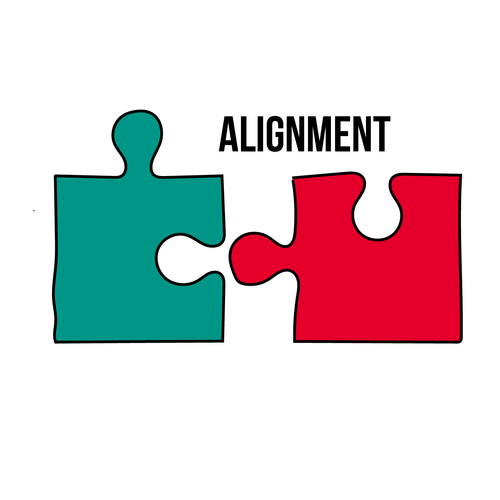
National Health Education Standards (NHES)
- 5.12.1 Examine barriers that can hinder healthy decision making.
- 5.12.2 Determine the value of applying a thoughtful decision-making process in health-related situations.
- 5.12.6 Defend the healthy choice when making decisions.
Wellness Guidelines
- Increase fruit and vegetable consumption
- Decrease junk food consumption

- Instruction: In a group or think-pair-share format, have participants discuss the following questions. Acknowledge those who have progressed towards their goal(s) and encourage anyone who wants to change or modify their goal to get 1:1 support.
- Share: Let’s discuss our SMART Goals.
- How is it going with your current SMART goal?
- What are some ways you can improve progress towards your goal? (Grows)
- What are some ways you are doing well with progress towards your goal? (Glows)
GUIDELINE: Increase Fruit and Vegetable Consumption
- Share: What guideline do you think is related to today’s lesson? Who has a SMART Goal related to this guideline?
- Instruction: Select one activity.
- Guideline Popcorn: The group lists all 8 guidelines rapidly in popcorn format.
- Guideline Charades: Divide participants into groups and assign each a guideline. Each group has to silently act out the guideline for the rest to guess.
- Two Truths and One Lie:
- Truth 1: Meats usually makes up the bulk of your grocery total (if you're non-vegetarian)
- Truth 2: Time equals money when it comes to eating well on a budget. 20 minutes to prepare a meal can save you more than 70% of what it would cost to buy that meal already prepared.
- Lie: Frozen fruits and vegetables are not as good for you as fresh fruits and vegetables.
- Share: Frozen fruits and vegetables are often cheaper than their fresh counterparts, but they contain just as many nutrients! The produce is frozen at its peak freshness so that you can enjoy all the benefits of fresh produce without the high price tag.
- Questions to discuss and/or journal:
- Who usually grocery shops for your family? How often do you grocery shop?
- Where do you usually grocery shop?
- Is "healthier" food more expensive than other types of foods? What makes you think one way or the other?
- Have you ever thought about saving money by making meals at home?
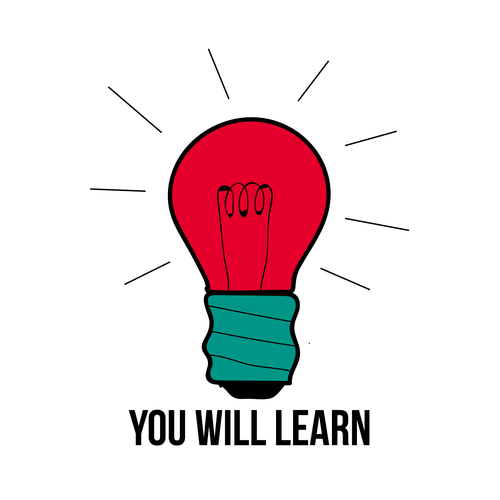
- How to eat healthy without overspending what’s in your budget.
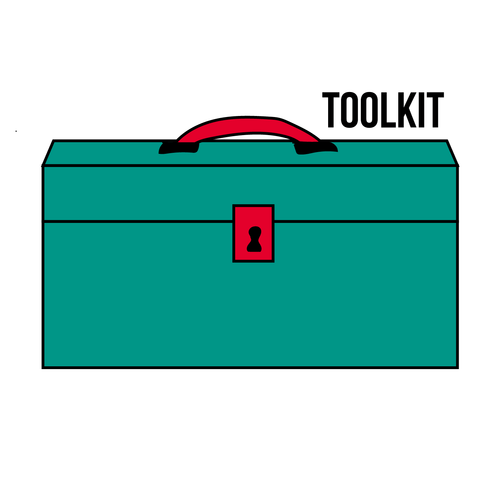
- Worksheets
- Slide presentation
- 4 Shopping Smart Stations Handouts (more may be needed for larger groups)
- Newspaper/flyers/magazines/print-outs with grocery coupons
- Pairs of the same type of grocery item but with different unit prices (for example a stick of butter with a unit price of $0.50 and another stick of butter with a unit price of $0.75): items should still have their price tags
- Writing utensils
- Paper
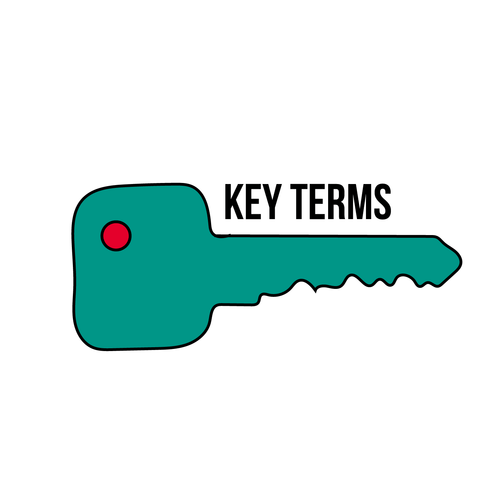
[As defined by USDA, 2017]
- Retail Price: The price you pay for each item.
- Unit Price: How much something costs per pound, ounce, quart, etc.
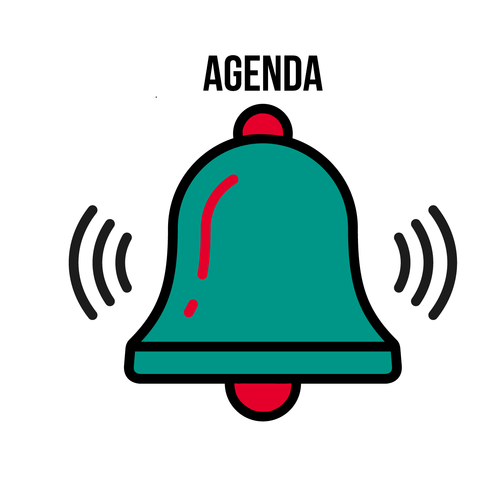
- Do Now
- Beat My Budget
- Understand the Price Tag
- Shopping Smart Stations
- Exit Ticket
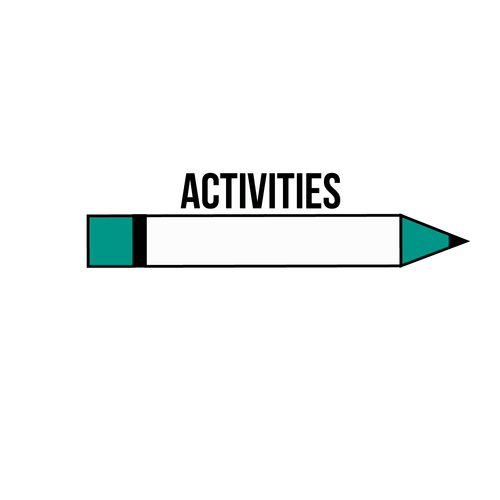
Do Now:
- Instruction:
- Have participants answer the following question on their worksheet or by sharing out loud.
- Think about the last two food/drink items you bought. What were they, and about how much did they cost?
- How do you decide what to buy at a grocery store?
- Based on how healthy the food is
- Based on prices (affordable things, what’s on sale, etc.)
- Based on what food is in season
- Based on how much you enjoy eating the foods
- Based on what you are craving at that moment
- Based on ads you’ve seen/heard
- Based on a request from or favorite foods of family members and friends
- Based on what is most convenient or quick to prepare
- Based on quantity (bulk items, etc.)
- Have participants answer the following question on their worksheet or by sharing out loud.
- Share:
- When you have a tight budget, grocery shopping may seem like a very difficult task.
- Some people may think that healthier foods (like fresh vegetables and fruits) are too expensive, and shopping on a tight budget means you have to give up eating healthy. However, that’s simply not true!
- There are ways that you can work around a tight budget and still eat healthily, and it all starts with shopping smart!
Good to Know: Beat My Budget
- Instruction:
- Ask participants to think of some strategies and tips we can follow to save money and shop smart at the grocery store.
- Have them distinguish whether that tip applies “before going to the store” or “at the store.”
- Record their answers on the board, projector, or flipchart. Responses may include
| Before the Store | At the Store |
| Plan your meals for the week: if you plan out a few breakfast options and 5 or 6 lunch/dinner meals, you should be able to eat healthily and cheaply for the whole week! Don’t be afraid of eating similar meals a few times throughout the week. | Time is money: precut vegetables, frozen prepared meals, instant oatmeal packs will cost more because the companies know they’re saving you time and energy. |
| Create a shopping list: using your meal plan, create a shopping list of just items you need for those meals (taking stock of what you already have at home, i.e. oils and spices). Add a few additional snack items. | Buy in bulk: oftentimes, larger packages of a certain item cost less per unit than smaller packages. If it is an item that you know you’ll use regularly purchase in bulk to have for a few weeks. |
| Eat before you shop: shopping while hungry can lead to unnecessary purchases! | Look up and down for savings: stores often stock the priciest items at eye level. You can save big by looking at the upper and lower shelves too. |
| Get the best price: check the newspaper, sales flyer, online and old receipts for coupons and specials that match your shopping list. Do not buy things you don’t need simply because they are “on sale!” Use a store savings card and buy store brands if they are the cheapest (often they are). | Buy in season: produce that is in the season is often less expensive and more flavorful than produce that is not in season. I.e. A butternut squash may cost ½ as much in the fall as it would in the spring because butternut squash is in season in the fall months. If you cannot find fresh in-season produce that you want to use, buy canned or frozen! If you buy canned, make sure to read the nutrition label to see what’s inside (watch out for too much salt)! |
| Think outside the store: large chain stores can be cheapest for bulk or nonperishable foods, while smaller markets (like the local farmers market or corner store) may be cheapest for fresh produce and other perishable items. | Don’t sweat about the brand name: oftentimes the store brand of the product is cheaper than fancy brands that you see everywhere. Think about getting the store brand to save a few bucks! |
| Ask for advice: talk to your coworkers/friends/family about where and how they shop to find the best bargains! | Check unit prices: similar products come in various sized packages and can cost very different prices. To better compare prices, look at the unit prices on the tag. |
- Share any tips not covered by participants.
Real World Relevance: Understand the Price Tag
- Share:
- The price tag on the grocery shelf includes a lot of helpful information. Let’s learn what the numbers mean!
- Instruction:
- Display the image below in the presentation or on the projector or board.

- Share:
- What do the two numbers on a price tag represent?
- The number on the right (in white box) is the retail price. Retail price is the price you pay for each item (USDA, 2017).
- The number on the left (in the red box) is the unit price. Unit price tells you how much something costs per pound, ounce, quart, etc. (USDA, 2017). It can be very useful when comparing two items.
- The retail price is usually greater than the unit price since there is usually more than one “unit” in a package.
- The image shows two different price tags. In the top one, the retail price is $1.62 for one 32 oz. yogurt. The unit price, in the red box, is $0.05 per oz. In the second one, the retail price is $0.72 for one 6 oz. yogurt, but the unit price is $0.12 per oz.
- You can use the unit prices to find out which is cheaper.
- In this case, you notice that the larger, 32 oz. yogurt is the better buy because you are getting more for your money. In other words, the unit price is smaller.
- How is the unit price found? It is the TOTAL PRICE divided by the SIZE (number of pounds, ounces, quarts, etc.).
- Example: What is the unit price of a 6 oz. yogurt that has a retail price (the price you pay) of $0.72? $0.72 divided by 6 oz. equals $0.12 The unit price of this yogurt is $0.12 per oz.
- Instruction:
- Divide participants into think-pair-share groups. Hand each group two of the same type of grocery items with different unit prices.
- Have each group figure out which of the two items is the better buy.
- Note: If it’s not possible to get actual products, then use price tag images.
- Example items:
- Block of cheese vs. shredded cheese
- Bulk bag of brown rice vs. a small bag of brown rice
- Instant oatmeal packets vs. big container of oatmeal
- Keurig coffee cups vs. big container of coffee grounds
Hands-On: Shopping Smart Stations
- Set Up:
- Around the room, set up the Shopping Smart stations with signage, written instructions (Shopping Smart Handouts), and any other materials listed in the toolkit.
- If you are having a hard time finding newspapers/flyers/magazines, consider printing out coupons of one of these websites:
- com
- com
- com
- Any grocery store website
- Instruction:
- Split participants into four (4) groups.
- Each group will be assigned to begin at one station.
- After a certain amount of time, (suggest 5-15 minutes) signal (stopping of music playing, gong, whistle, etc.) groups to switch stations.
- Repeat until all the groups have visited each station.
- Prior to starting, go over the instructions for each station.
- Share:
- Cash Those Coupons: Coupons can be super helpful in saving money! Many stores will send coupons to you in the mail and some will give you coupons at the end of your previous receipts, so you should try and scan through them before you leave your house! Your goal for this station is to work together to create three different meals (breakfast, lunch, and dinner) for a family of four for $20 total using the variety of coupons at your station.
- The Price is Right: In this station, you will be “competing” with other groups to find the best deals for the following food groups. You can search online or use the newspaper/flyers/magazine. Feel free to get creative! The item doesn’t necessarily have to be “fresh” or in its original form, but it should be healthy. Discuss with one another and pick the cheapest and healthiest item in each category. Then, write your choices on your worksheet.
- Fruit
- Vegetable
- Protein Foods
- Dairy
- Grain
- Mix It Up! Batch cooking is a great way to use up what you might buy in bulk. Get creative with how you use those leftovers! Your goal for this station is to “make” three meals with a variety of ingredients. Then, mix up the ingredients they’ve cooked to make a few other meals! For example Roast chicken with sweet potato wedges, brown rice, and steamed broccoli. Mix it up: You could make a stir-fry by adding soy sauce and maybe a scrambled egg. You could make a chicken soup by shredding the chicken into chicken broth and removing the sweet potatoes. You could make quesadillas by putting all the ingredients except for the rice between two tortillas and adding cheese.
- Eat Smart, Spend Less: Planning meals can be very useful for creating a shopping list and sticking to your budget. As a group, your goal for this station is to find three recipes of meals you’d like to make for the week. Then, using your knowledge of what you probably have in your kitchen already (oils and spices), make a shopping list of items you’ll need to purchase. Separate your shopping list into “produce,” “frozen foods,” “meats,” “dairy,” and “nonperishable items.” Estimate the total price of your grocery list.
- Example grocery list: choosemyplate-prod.azureedge...nteractive.pdf
- Recommended websites (found on the Shopping Smart Stations Handout):
- www.choosemyplate.gov/budget-sample-two-week-menus
- www.choosemyplate.gov/budget-recipes
- whatscooking.fns.usda.gov/sites/default/files/featuredlinks/MeetingYourMyPlateGoalsOnABudget.pdf
- Optional: If participants have access to the internet, then direct them to websites to find the recipes instead of referring to the handout.
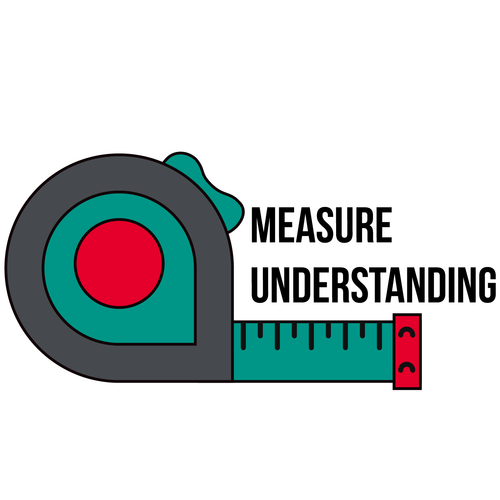
Exit Ticket: 3-2-1
- Instruction:
- Have participants write on their worksheet or share out loud the following question(s).
- What are 3 tips you want to try for saving money when grocery shopping?
- What are 2 food/drinks you spend your money on that you might want to re-think if you were trying to save money?
- What is 1 meal under $5 per person you can make for your family?
- Have participants write on their worksheet or share out loud the following question(s).
Bibliography
- U.S. Department of Agriculture. (2017). Eat Healthy On a Budget. Retrieved From: https://www.choosemyplate.gov/budget
- U.S. Department of Agriculture. (2017). Understand the Price Tag. Retrieved From: www.choosemyplate.gov/budget-price-tag
- U.S. Department of Agriculture & U.S Department of Health and Human Services. (2015). Dietary Guidelines for Americans. Retrieved From: https://health.gov/dietaryguidelines...Guidelines.pdf

- U.S. Department of Agriculture. (2013). Meeting Your MyPlate Goals on a Budget. Retrieved From: whatscooking.fns.usda.gov/sites/default/files/featuredlinks/MeetingYourMyPlateGoalsOnABudget.pdf
- U.S. Department of Agriculture. (2017). Sample 2 week menus. Retrieved From: www.choosemyplate.gov/budget-sample-two-week-menus
- Fresh vs. Frozen for $10 Infographic (USDA, 2013):
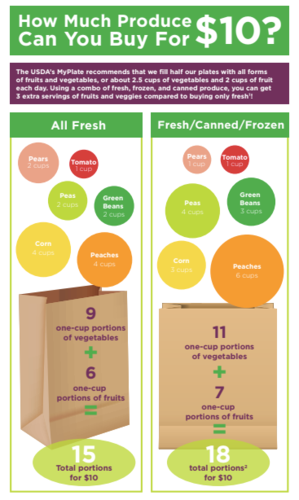
This lesson was created in partnership with Albert Einstein College of Medicine Department of Epidemiology and Population Health with funding support by the National Institutes of Health NIDDK Grant R01DK097096.
- Share: What guideline do you think is related to today’s lesson? Who has a SMART Goal related to this guideline?
- Instruction: Select one activity.
- Guideline Popcorn: Have the group list all 8 guidelines rapidly in popcorn format.
- Guideline Charades: Divide participants into groups and assign each a guideline. Each group has to silently act out the guideline for the rest to guess.
- Two Truths and One Lie:
- Truth 1: Meats usually makes up the bulk of your grocery total (if you’re non-vegetarian).
- Truth 2: Time equals money when it comes to eating well on a budget. 20 minutes to prepare a meal can save you more than 70% of what it would cost to buy that meal already prepared.
- Lie: Frozen fruits and vegetables are not as good for you as fresh fruits and vegetables.
- Share: Frozen fruits and vegetables are often cheaper than their fresh counterparts, but they contain just as many nutrients! The produce is frozen at its peak freshness so that you can enjoy all the benefits of fresh produce without the high price tag.
- Questions to discuss and/or journal:
- Who usually grocery shops for your family? How often do you grocery shop?
- Where do you usually grocery shop?
- Is “healthier” food more expensive than other types of foods? What makes you think one way or the other?
- Have you ever thought about saving money by making meals at home?

